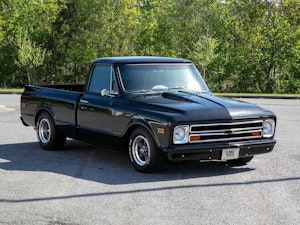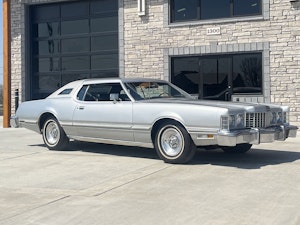Media | Articles
The Evinrude Rooney Lakester was both a boat and a car—but not at the same time
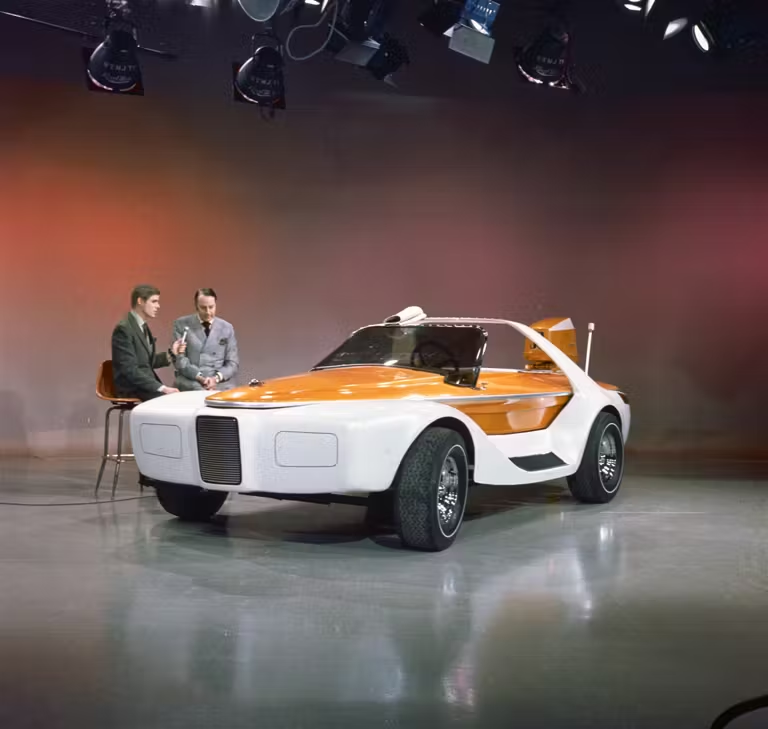
The automotive fringes have always been obsessed with the potential for duality. How else to explain the seemingly endless efforts to combine one mode of transportation with another, from the short-lived Amphicar 770 swimmer to the Terrafugia Transition flyer?
Such was the case with one of the weirdest of the wet, the Evinrude Rooney Lakester. Not only did this one-off twin-up combine two of America’s most popular pastimes—driving and boating—but it presaged the Transformers trend by more than a decade with its split personality.
In the process, the Lakester embodied three key aspects of the ’70s concept car heyday: a designer who wasn’t afraid to break with convention, a corporate sponsor that had zero experience in building passenger vehicles, and a national stage that had little to do with automobiles in the first place.
Come on down!
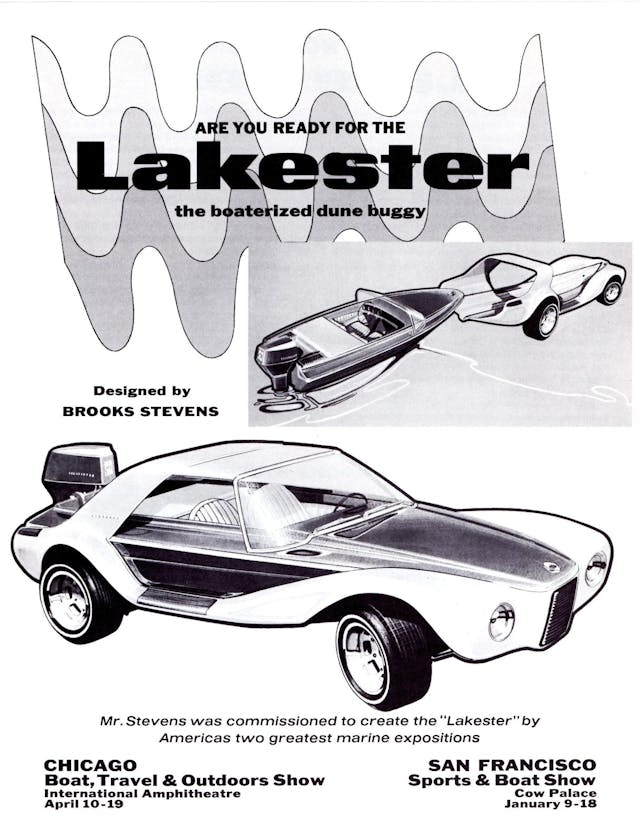
In 1970, anybody who was anybody in the American marine business made sure to snag prime real estate at one of two major trade shows: The Sports & Boat Show in San Francisco, California, and the National Boat Travel & Outdoors Show in Chicago, Illinois. These two venues regularly hosted the latest and greatest tech and design from builders across the country, and so it made sense that a company like Evinrude Outboard Motors would do its best each year to make the biggest splash it could.
The Chicago show was particularly important to Milwaukee-based Evinrude. Seeking to step outside the norm with something guaranteed to get the media talking, it turned to one of Wisconsin’s favorite sons, Brooks Stevens. The veteran designer behind the Jeep Wagoneer, the Studebaker Lark Wagonaire, and the Oscar Mayer Weinermobile, had previously worked with Evinrude on a number of boats and engines and was asked to come up with something to dazzle attendees.
Marketplace
Buy and sell classics with confidence
Does it work? Who cares!
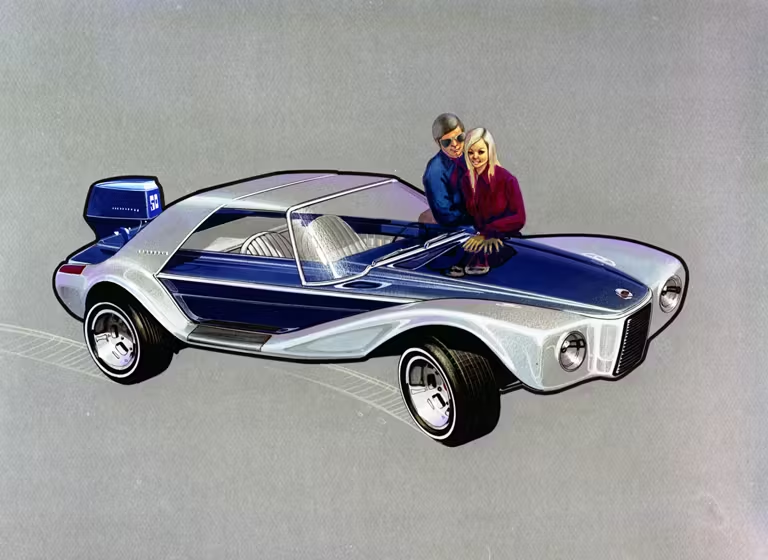
Evidently, Stevens received few guidelines, because what emerged was more like the product of a fevered, rather than fertile, mind. The Rooney Lakester (named after the 329-acre body of water that is a Wisconsin landmark) was about half what you’d expect from marine veterans like Evinrude, given that 50 percent of the vehicle was an actual boat.
The other half? A car-like receptacle for that vessel that allowed it to form together like Voltron and ply the highways and byways after leaping from the canal like some metal salmon seeking to spawn on the interstate. The “Lakester” name was a play on the roadster-like attributes of the Rooney, which featured a roll bar but no full roof to protect its occupants once it was rolling down the road (although some illustrations placed a targa panel atop the front two seating positions).
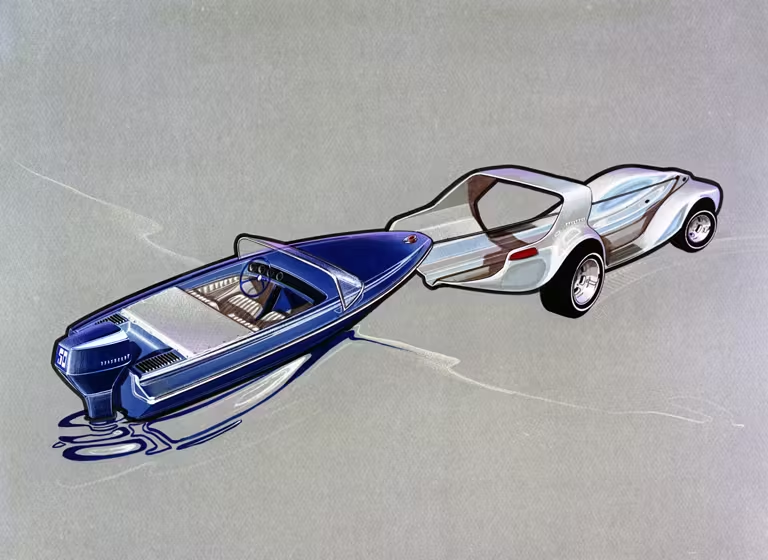
While the concept of an automobile that was simultaneously a boat AND a car had been explored before, the Rooney Lakester was the first vehicle to present itself as EITHER/OR, but not both at once. One didn’t drive the Lakester into the lake, but instead somehow slipped its wooden-framed hull out of its auto-skeleton and then dropped it into the water, retrieving it at a later point in time by way of an electric winch. Not explained by any of the contemporary materials provided with the Rooney was how its car carapace would be removed from the boat ramp or beach post-launch, prompting speculation that the Lakester simply sat there until its mechanical guts made their way back out of the water.
One and done
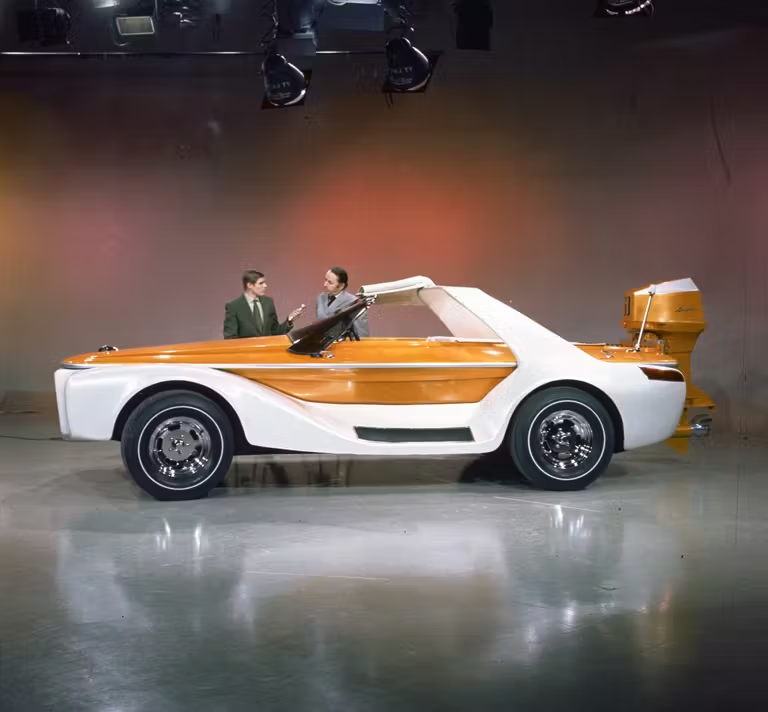
Technical details on the Rooney Lakester’s drivetrain are spotty at best. Popular Science divulged that the vehicle used its 50-hp outboard motor to provide locomotion on both land and at sea, using a hydrostatic gearbox that functions by way of a hydraulic pump and motor. The idea of running an outboard on a public road, particularly one of the two-stroke variety, is only one of the Lakester’s unlikely attributes, followed closely by its claim of using “Volkswagen running gear.” It’s difficult to see, exactly, how a Volkswagen platform could package a rear-mounted outboard-based drivetrain, which leads one to suspect that the vehicle was mostly a roll-in, roll-out proof of concept rather than a functional prototype.
Still, the Lakester did what it was meant to do: score media mentions at each of the trade shows where it was shown off, and then fade discretely into the background so that Evinrude could get on with the businesses of selling actual boats and motors to people without fantasies of also driving them to work.
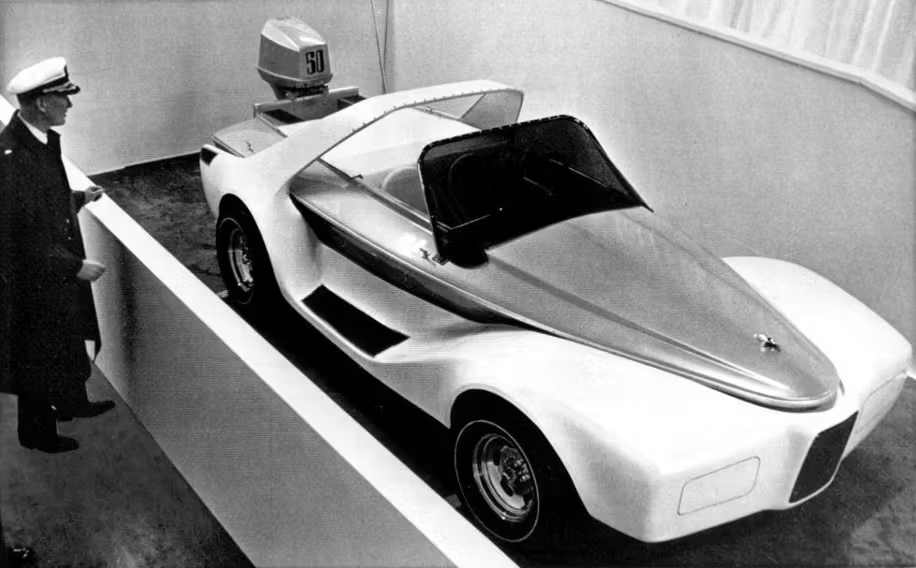
As for Brooks Stevens, the Rooney Lakester was merely one of the thousands of industrial and commercial product designs he would churn out over his lifetime. Heavily concentrated in the ’50s and ’60s, his marine work helped presage the shift towards more modern looks and functionality in small boats (as well the occasional dose of old school chrome-and-fury).
Today, the Amphicar remains the only mass-produced aquatic automobile, although companies like Watercar continue to do a brisk business selling conversions like the Gator and the Python (with the latter offering LS power). Even in the world of bespoke boats, however, no one has been brave enough to try to duplicate Stevens’ two-spirit Lakester creation.


